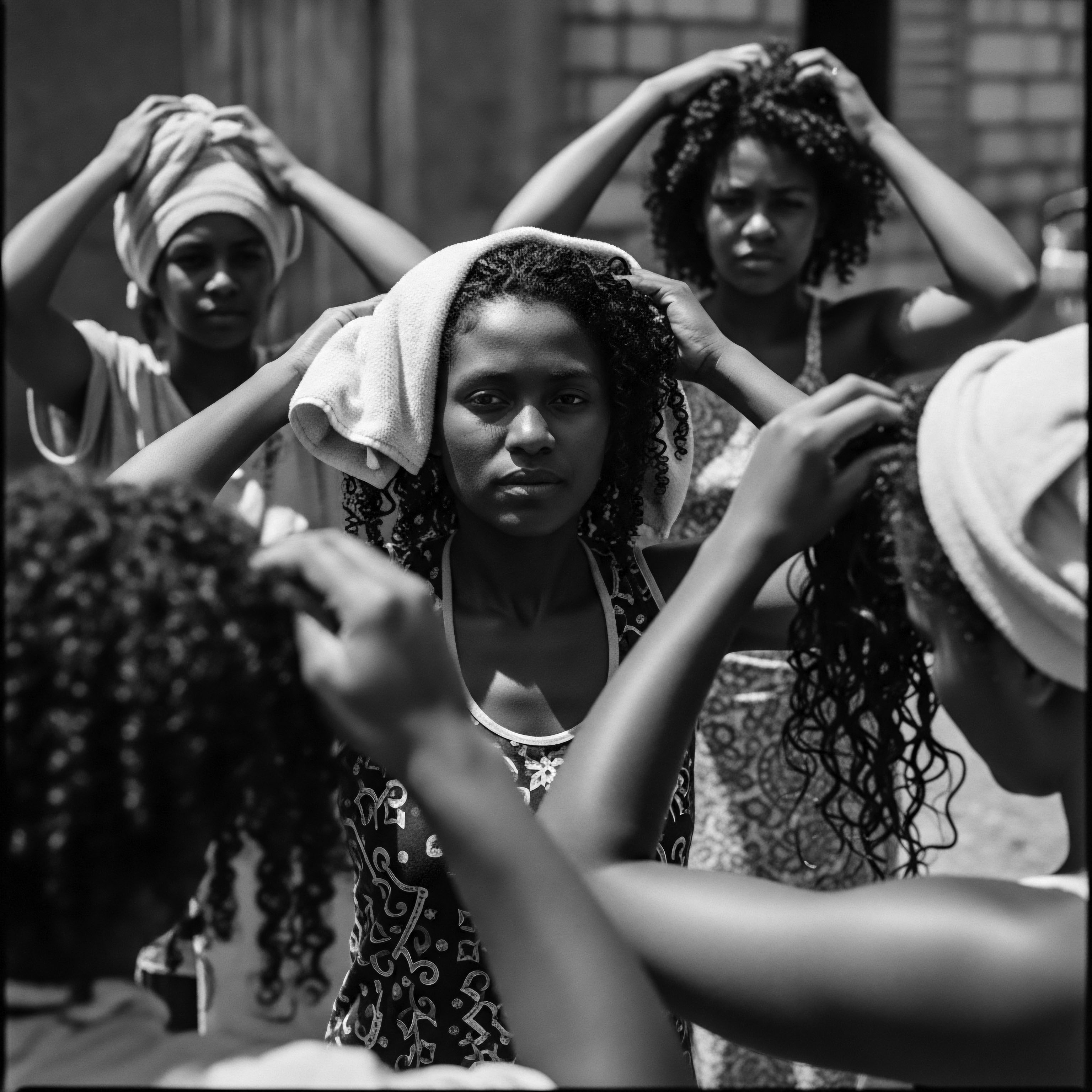
Roots
To stand at the precipice of understanding how plant oils bestow their moisturizing grace upon textured hair is to listen for the echoes of ancestral whispers, a symphony of knowledge passed through generations. It is not merely a scientific inquiry; it is an invitation to witness a living heritage, a continuum of care that binds us to those who came before. For textured hair, with its unique helical architecture, holds within its very structure stories of resilience, identity, and profound connection to the earth’s offerings. To truly grasp the essence of how plant oils moisturize, one must first feel the pulse of this lineage, recognizing that our modern understanding often mirrors, or validates, the intuitive wisdom of our forebears.
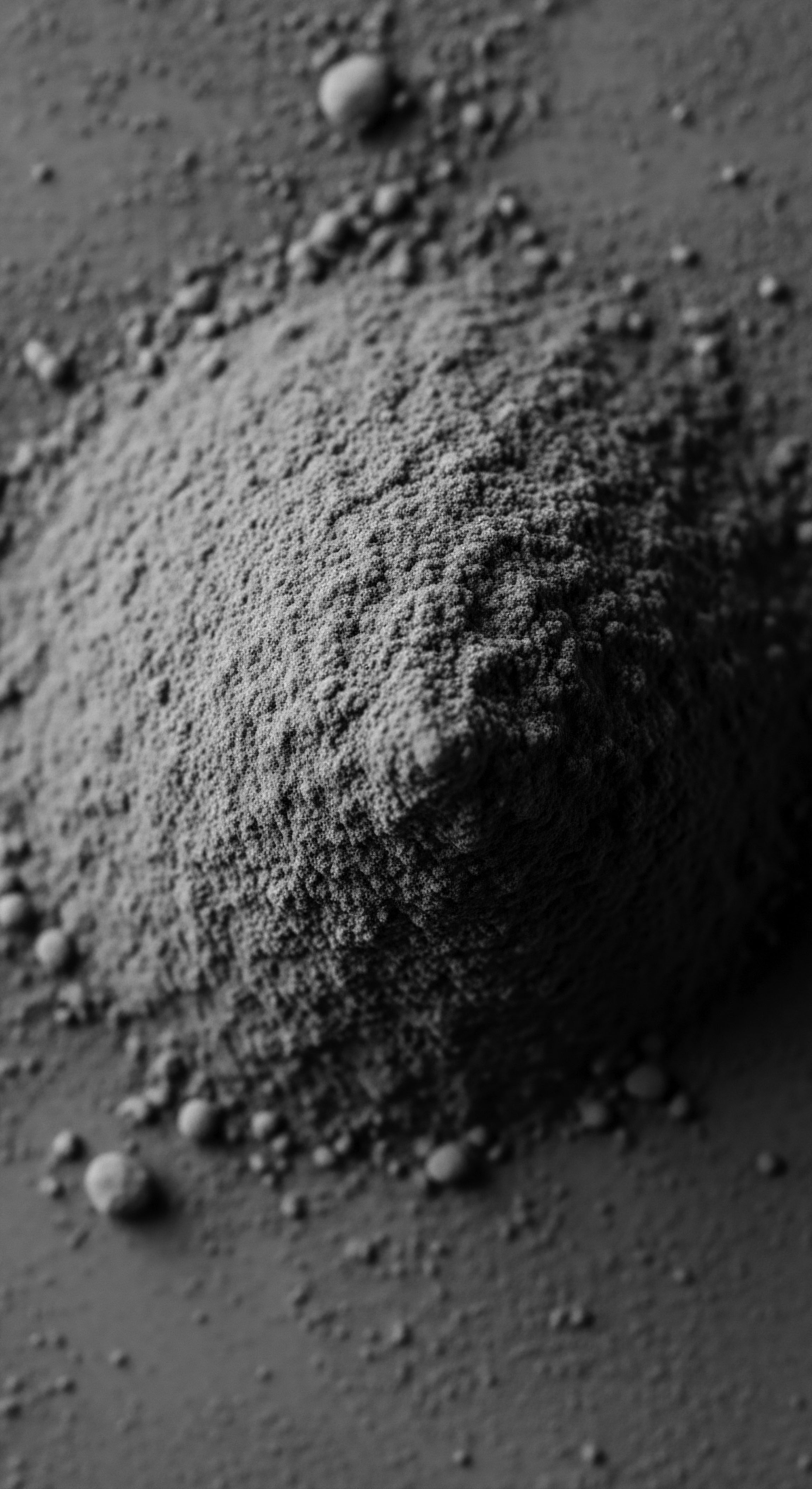
The Architecture of Textured Hair
The journey into how plant oils moisturize begins with the very strand itself. Textured hair, whether coily, kinky, or curly, possesses a distinct anatomical blueprint. Unlike straight hair, which typically has a round cross-section, textured hair often exhibits an elliptical or flattened shape. This shape, combined with the way the hair shaft twists and turns, creates numerous points where the cuticle, the outermost protective layer of the hair, lifts and exposes the inner cortex.
This naturally occurring characteristic renders textured hair more susceptible to moisture loss, as water can escape more readily from these raised cuticular scales. This inherent vulnerability to dryness has historically guided care practices, leading communities to seek solutions that would seal the hair, providing a shield against environmental elements.
The Cuticle, a shingle-like arrangement of keratinized cells, functions as the hair’s primary defense. When these cells lie flat, they create a smooth surface that reflects light, giving hair a lustrous appearance, and, critically, they hold moisture within the strand. In textured hair, the natural bends and curves mean these scales do not always lie as flat, creating microscopic gaps. This anatomical reality makes textured hair more prone to dryness and breakage, a truth understood intuitively by generations of caregivers who instinctively turned to emollients from nature.
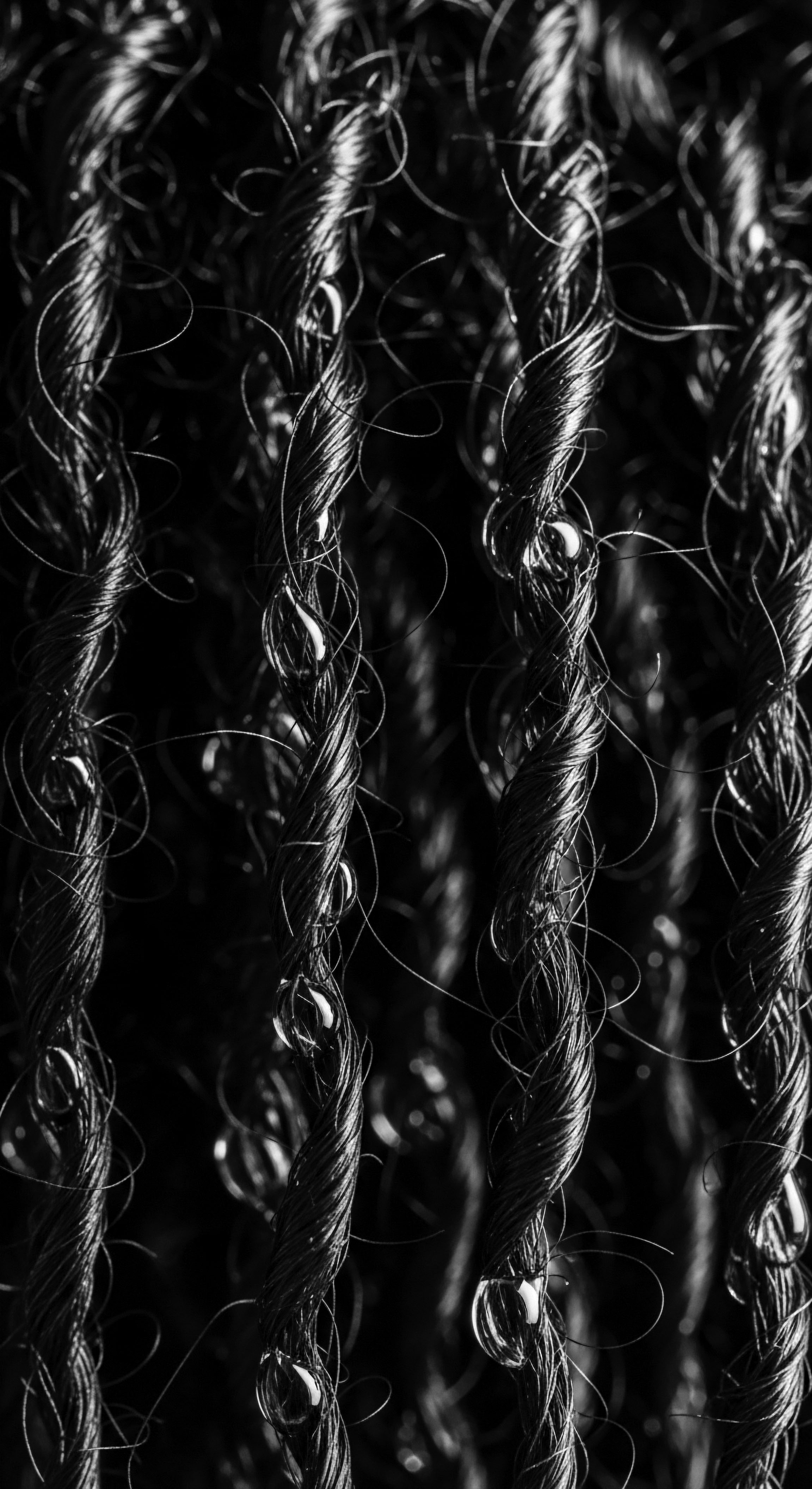
Ancestral Understanding of Hair’s Needs
Long before the advent of molecular biology, our ancestors possessed a deep, empirical knowledge of hair’s requirements. They observed, experimented, and passed down rituals that intuitively addressed the unique properties of textured hair. This ancestral wisdom, honed over centuries, recognized the thirst of coily strands and the protective power of plant-derived substances. From the shea trees of West Africa to the coconut groves of the Caribbean, communities identified specific botanicals that offered respite from dryness and fortified the hair against daily wear.
The historical use of plant oils in textured hair care is a testament to ancestral wisdom in recognizing and addressing the hair’s intrinsic need for moisture and protection.
The use of plant oils was not simply about cosmetic appeal; it was deeply intertwined with cultural identity, spiritual practice, and even survival. In pre-colonial Africa, hairstyles communicated social status, age, marital standing, and ethnic identity. The intricate processes involved washing, combing, oiling, and braiding, often becoming communal activities that fostered bonding and connection (Adotama, 2023). The application of oils was an integral part of this ritual, serving to prepare the hair for styling, maintain its health, and enhance its symbolic meaning.
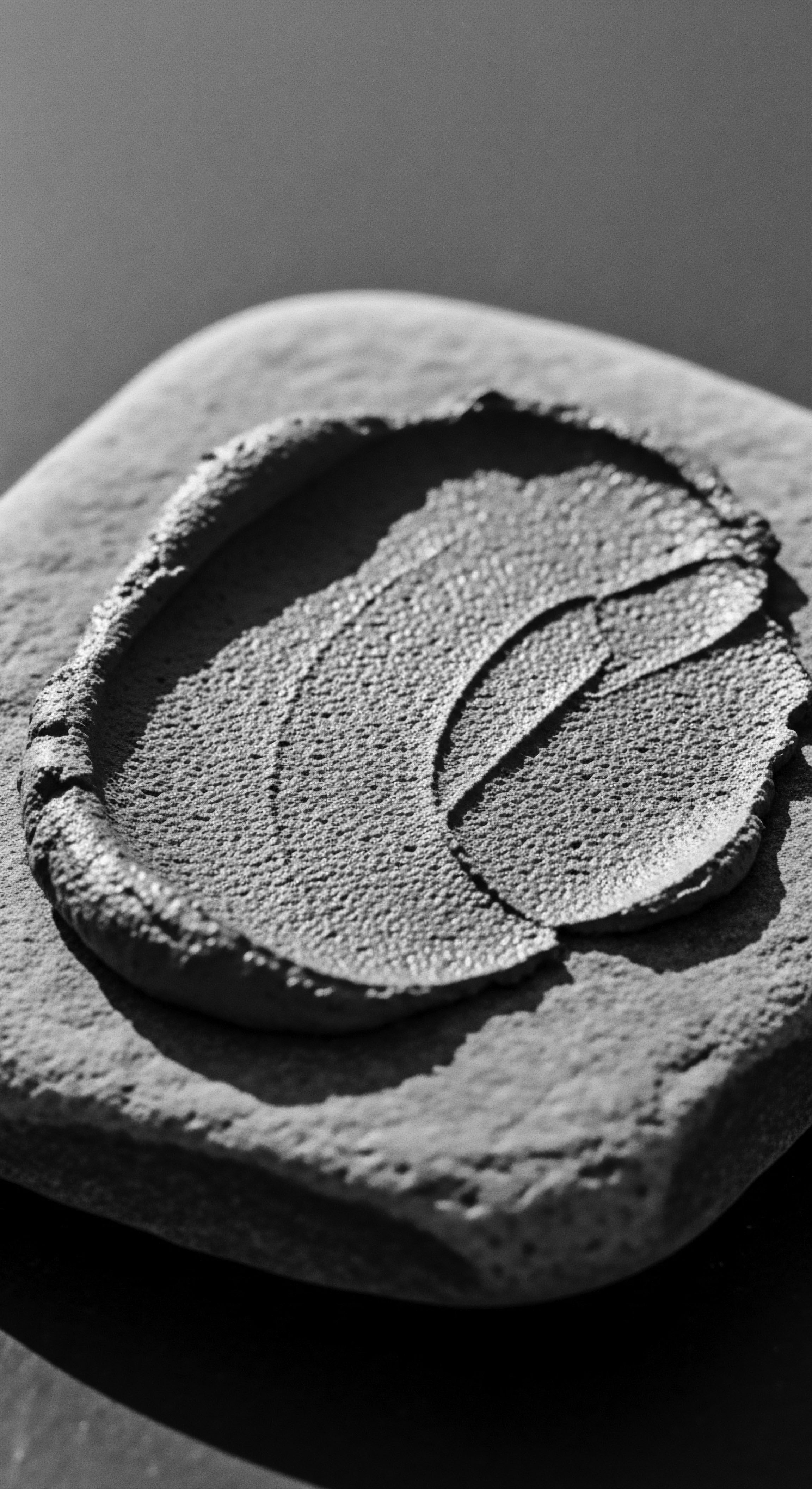
The Essential Lexicon of Plant Oils for Hair
The language of hair care, particularly for textured hair, is rich with terms that describe both its characteristics and the remedies applied. When we speak of plant oils, we encounter categories that define their interaction with the hair strand:
- Penetrating Oils ❉ These oils possess a molecular structure small enough to pass through the cuticle and enter the hair’s cortex. They deliver lipids directly to the inner structure, replenishing lost moisture and strengthening the strand from within. Examples include Coconut Oil, rich in lauric acid, and Olive Oil, abundant in oleic acid (Garodia, 2021).
- Sealing Oils ❉ These oils form a protective barrier on the hair’s surface, preventing moisture from escaping and shielding the hair from environmental aggressors. They do not penetrate deeply but are crucial for moisture retention. Jojoba Oil, which closely mimics the scalp’s natural sebum, and Castor Oil, known for its thickness, are prime examples.
- Humectant Properties ❉ While not oils themselves, some plant oils, or ingredients often paired with them, can draw moisture from the air into the hair. This characteristic is particularly beneficial for textured hair, which benefits from consistent hydration.
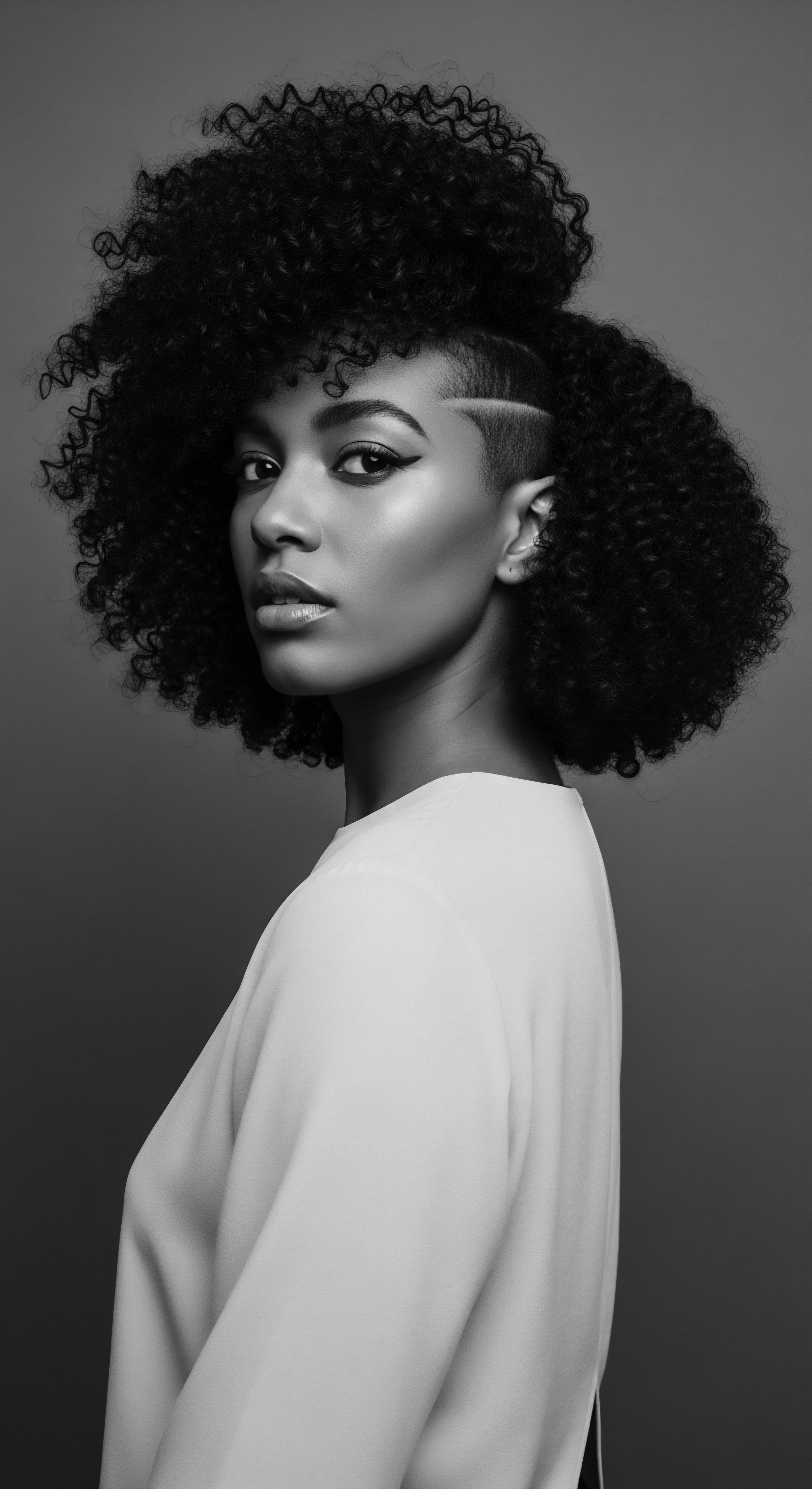
How Plant Oils Moisturize ❉ A Scientific Echo of Tradition
Plant oils moisturize textured hair through a multi-pronged approach that science now explains, but which ancestral practices intuitively harnessed.
At a fundamental level, plant oils are composed of Fatty Acids, which are lipid molecules. These fatty acids are the building blocks of the oils’ moisturizing power. Textured hair, being more prone to dryness, often lacks sufficient lipids within its structure and on its surface. When plant oils are applied, their fatty acids replenish these lost lipids.
The process unfolds in several ways:
- Cuticle Sealing ❉ Many plant oils, especially those with larger molecules or specific fatty acid profiles, create a hydrophobic (water-repelling) film on the hair’s surface. This film acts as a barrier, preventing water from evaporating from the hair shaft. This is particularly vital for textured hair, where the raised cuticle can allow moisture to escape rapidly. By sealing the cuticle, oils help the hair retain the water it has absorbed, keeping it hydrated for longer periods.
- Direct Penetration ❉ Certain plant oils, like coconut oil, have a unique molecular structure that allows them to penetrate beyond the cuticle into the hair’s cortex. This is due to their high content of saturated fatty acids, particularly lauric acid, which has a small linear shape that can slip past the cuticular scales. Once inside, these oils can reduce protein loss, strengthen the hair shaft, and contribute to internal moisture balance (Garodia, 2021). This internal fortification is a cornerstone of true moisturization, not just surface-level conditioning.
- Mimicking Natural Sebum ❉ Some oils, such as jojoba oil, are chemically similar to the natural sebum produced by the scalp. When applied, they can help regulate the scalp’s oil production, preventing excessive dryness or oiliness, and providing a natural conditioning effect that works in harmony with the body’s own processes. This biomimicry ensures compatibility and effective delivery of moisture without disrupting the scalp’s delicate balance.
This interplay of sealing and penetrating qualities, often combined in traditional formulations, explains the profound efficacy of plant oils for textured hair. They do not merely sit on the surface; they actively participate in the hair’s lipid architecture, a sophisticated dance between nature’s gifts and the hair’s inherent needs, understood through generations of lived experience.
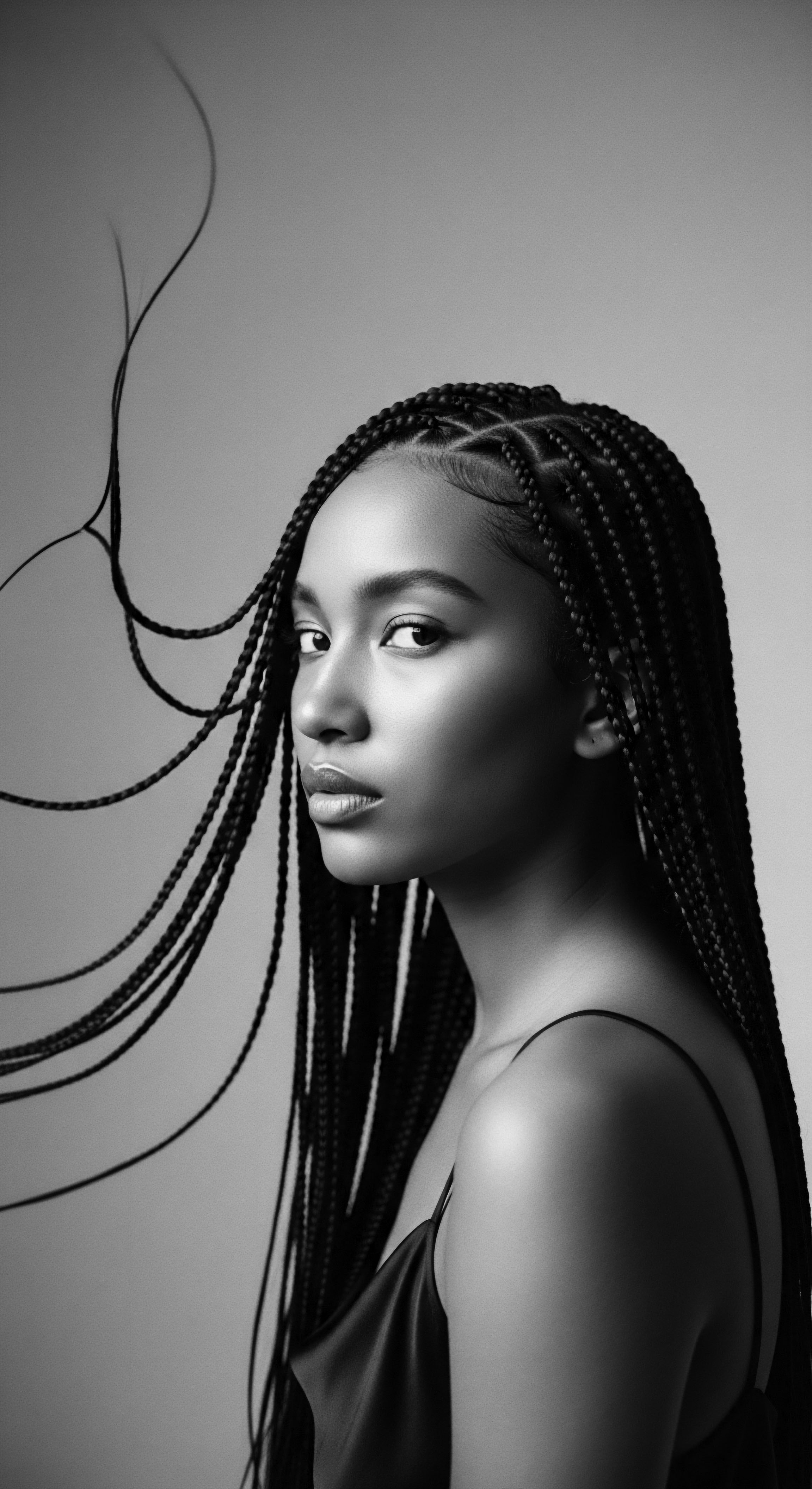
Ritual
As we step beyond the foundational understanding of textured hair and the elemental workings of plant oils, we enter the sacred space of ritual. This is where knowledge transforms into practice, where the theoretical becomes tangible. Our ancestors, with their deep reverence for the body and its adornments, understood that hair care was not a fleeting act but a deliberate, often communal, engagement.
Their rituals, passed down through generations, shaped the very essence of how plant oils moisturize, reflecting an intuitive mastery of application, technique, and timing. To understand this dimension of plant oils is to honor the hands that kneaded, the voices that chanted, and the shared moments that fortified not just hair, but also community bonds.
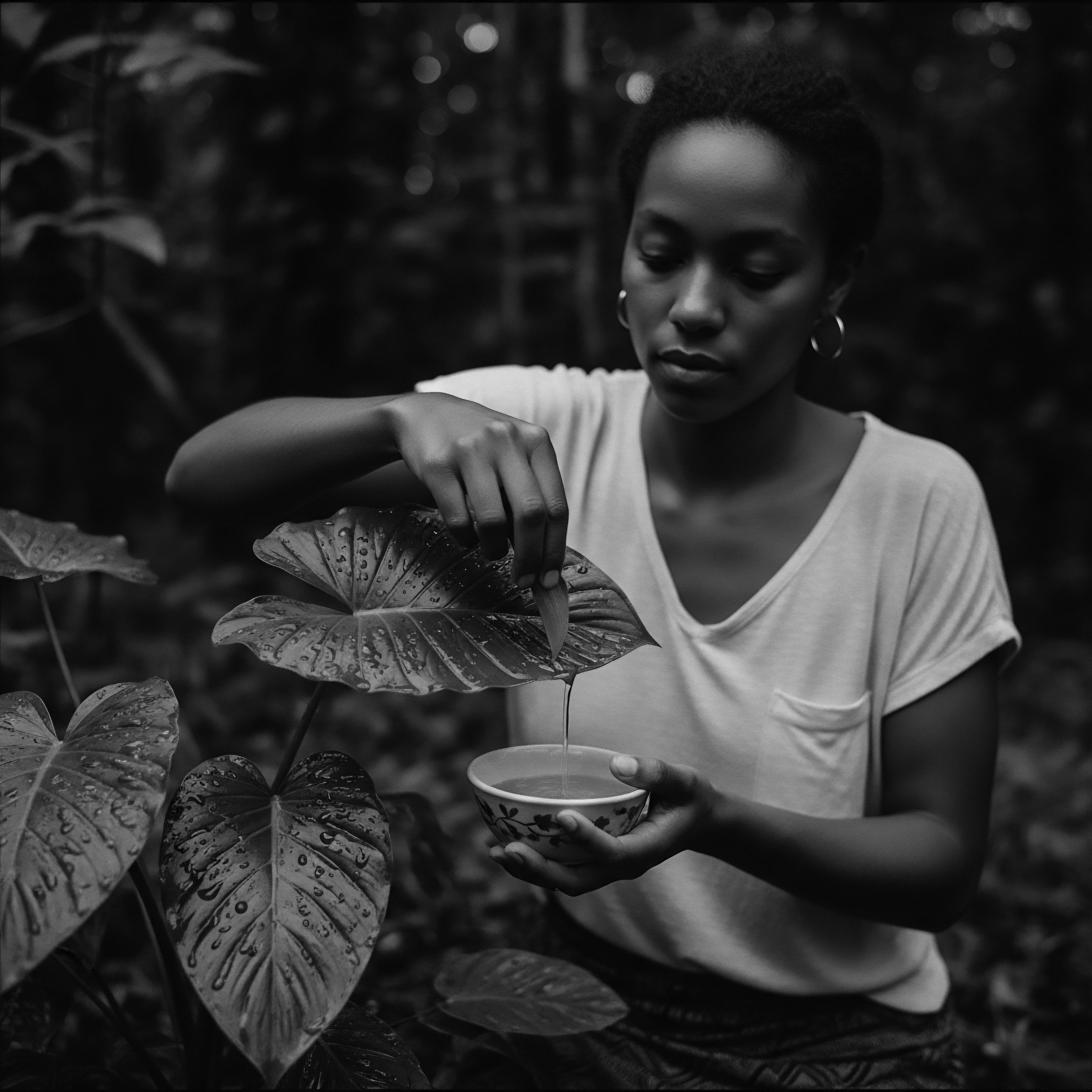
Protective Styling Echoes from Antiquity
The wisdom of protective styling, a cornerstone of textured hair care today, finds its genesis in ancient practices, long before the term was coined. Plant oils were indispensable in these historical styles, providing lubrication, flexibility, and a shield against the elements. Intricate braids, cornrows, and twists, seen across pre-colonial African societies, were not solely aesthetic expressions; they served practical purposes, preserving hair health and communicating social narratives (Oforiwa, 2023).
During the transatlantic slave trade, when enslaved Africans were stripped of their cultural identities, hair became a powerful symbol of resistance and a clandestine means of communication. Hair was braided to create maps for escape routes, with rice seeds sometimes woven into the strands for sustenance (University of Salford Students’ Union, 2024). In these harrowing circumstances, plant oils like Shea Butter and Coconut Oil, if available, were used to moisturize and protect the hair from the brutal conditions of plantation life, a testament to their enduring utility and cultural significance. This practice of oiling before protective styling continues today, a direct lineage from necessity to intentional care.
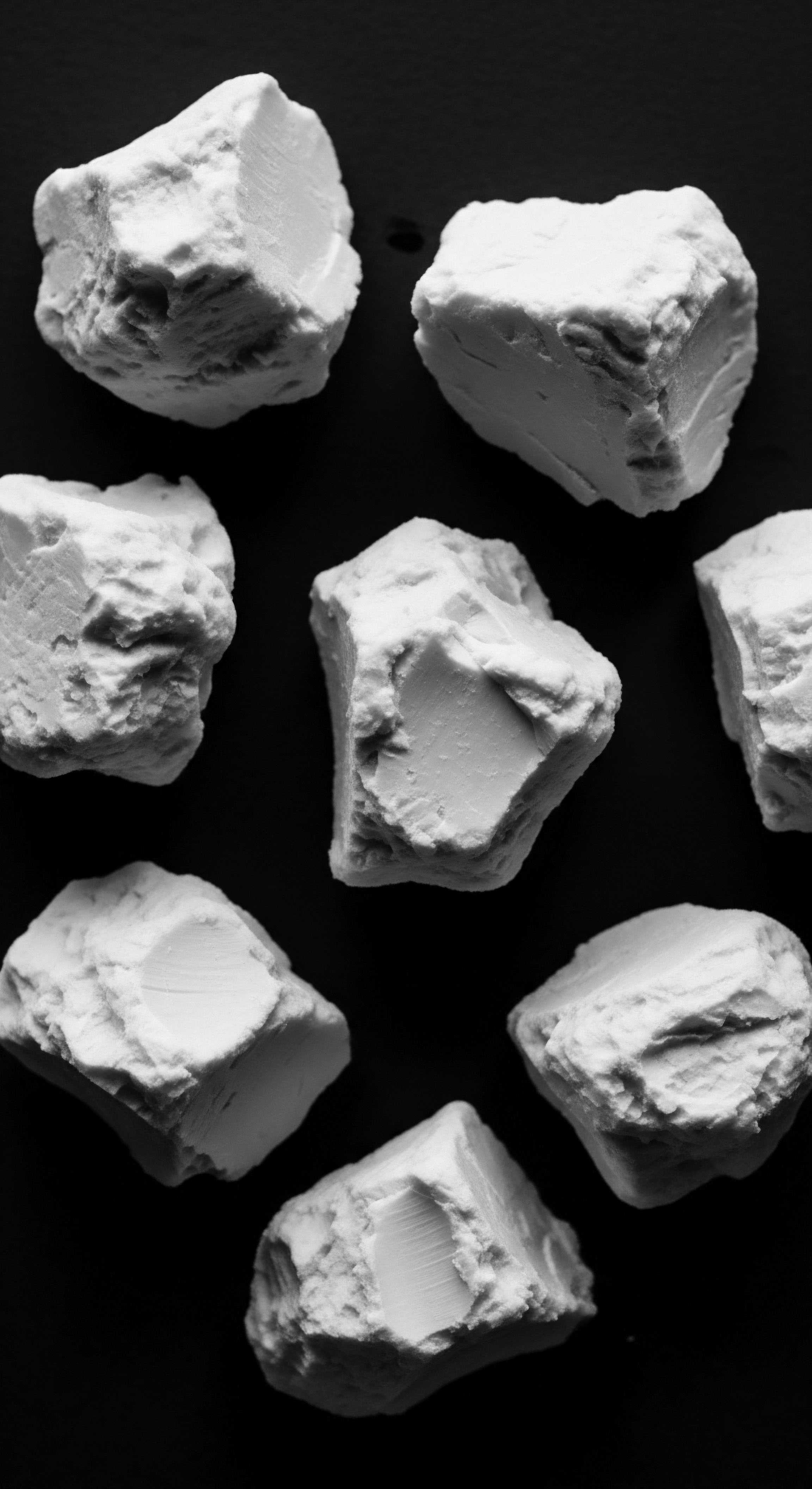
Traditional Methods of Application and Definition
The application of plant oils was rarely a hasty affair. Traditional methods often involved warming the oils, a practice that enhances their ability to penetrate the hair shaft and stimulates blood circulation in the scalp. This warming ritual, often accompanied by gentle massage, was believed to promote hair growth and overall hair health (Garodia, 2021).
Consider the ancient Indian system of Ayurveda, where hair oiling has been a centuries-old practice. Coconut oil, amla, and bhringraj were commonly used, massaged into the scalp to nourish and strengthen hair. This practice of scalp oiling is not just about the hair strand but the entire ecosystem of the scalp, recognizing its role as the foundation for healthy growth. Similarly, in many African communities, the laborious process of preparing and applying oils like shea butter involved communal effort, reinforcing social ties while providing essential care.
The rhythmic application of oils was also crucial for defining natural texture. For coily and curly hair, plant oils help to clump the curls, reducing frizz and enhancing their natural pattern. This is achieved by smoothing the cuticle and providing the necessary slip for the coils to form without friction. The application was often layered, a precursor to modern “LOC” (Liquid, Oil, Cream) or “LCO” methods, ensuring deep hydration followed by sealing.
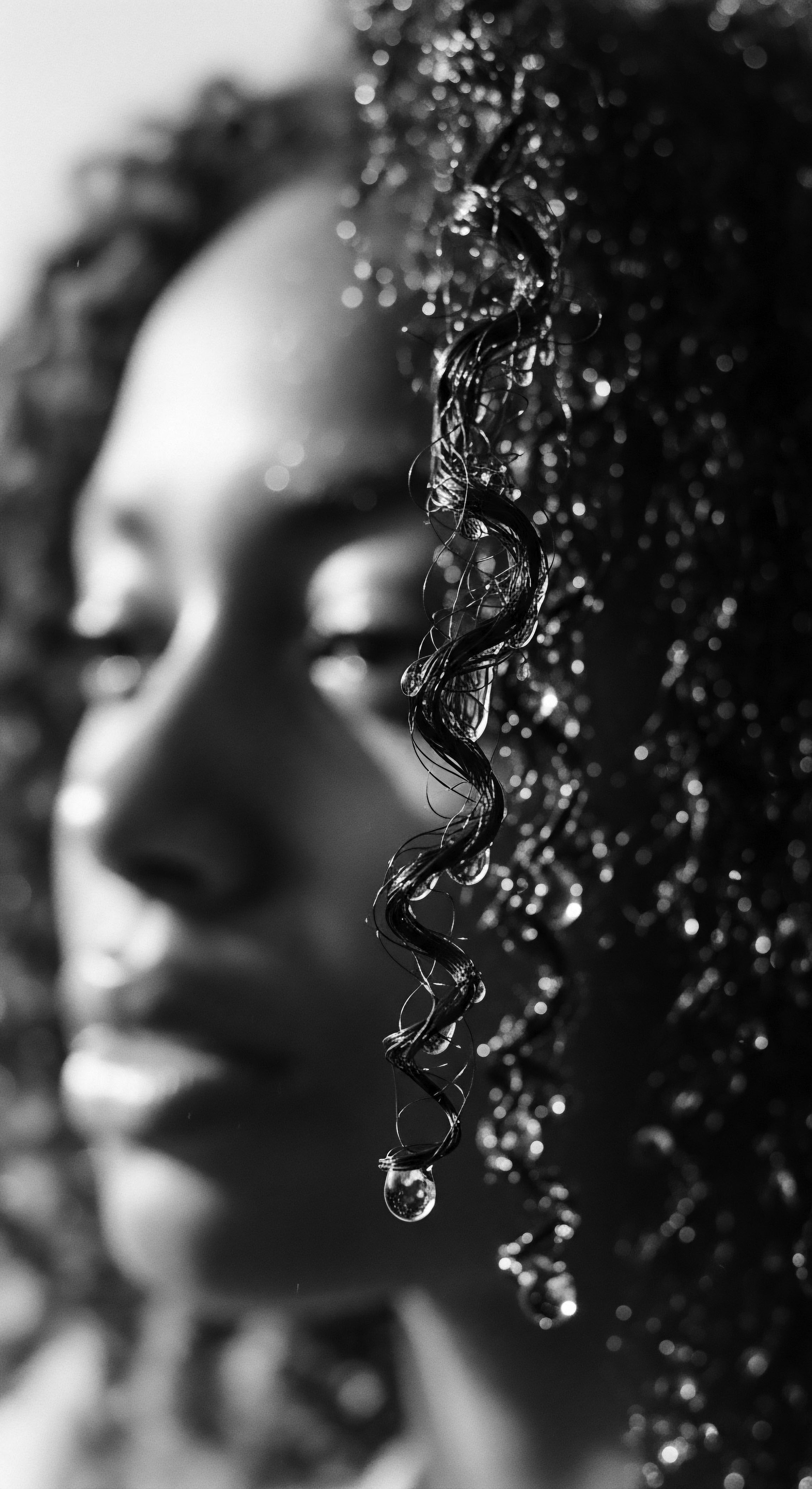
The Hair Toolkit ❉ Ancestral Ingenuity
The tools used alongside plant oils also carry a heritage. Simple combs crafted from wood, bone, or metal, often handmade, were designed to navigate the unique density and curl patterns of textured hair. These tools, used in conjunction with oils, allowed for gentle detangling, distribution of product, and the creation of intricate styles. The careful selection and crafting of these implements speak to a deep understanding of hair’s delicate nature and the need for tools that honored its structure rather than fought against it.
| Traditional Plant Oil Shea Butter |
| Historical Origin/Use West and Central Africa, used for over 3,000 years to protect skin and hair from sun, wind, and dust. Cleopatra and Queen of Sheba reportedly used it. |
| Modern Scientific Link to Moisturizing Textured Hair Rich in vitamins A, E, and F, it provides deep hydration without a greasy feel, forms a protective barrier, and helps reduce breakage. Its unsaponifiable nature helps stimulate collagen production. |
| Traditional Plant Oil Coconut Oil |
| Historical Origin/Use Ancient Ayurvedic practices in India (4,000 years), Southeast Asia, Pacific Islands. Used for nourishment, hydration, and spiritual cleansing. |
| Modern Scientific Link to Moisturizing Textured Hair High in lauric acid, its small molecular size allows deep penetration into the hair fiber, reducing protein loss and providing intense moisture from within. Also has antifungal properties for scalp health. |
| Traditional Plant Oil Olive Oil |
| Historical Origin/Use Ancient Greece (3500 BC), Rome, Mediterranean cultures. Used for luxurious locks, deep conditioning, and scalp nourishment. |
| Modern Scientific Link to Moisturizing Textured Hair Rich in monounsaturated fats (oleic acid) and antioxidants, it penetrates the hair cortex, improving strength and elasticity, and providing a protective barrier against oxidative stressors. |
| Traditional Plant Oil Castor Oil |
| Historical Origin/Use Ancient Egypt, staple in hair care routines to condition and strengthen hair; often mixed with honey and herbs. |
| Modern Scientific Link to Moisturizing Textured Hair A thick, sealing oil that helps retain moisture on the hair's surface, reducing frizz and aiding in length retention by preventing breakage. Contains ricinoleic acid, which may support scalp health. |
| Traditional Plant Oil Jojoba Oil |
| Historical Origin/Use Indigenous American cultures, gained prominence in Black beauty in the 1970s as a natural alternative. |
| Modern Scientific Link to Moisturizing Textured Hair Chemically similar to natural sebum, it regulates scalp oil, forms a protective layer, reduces moisture loss, and improves hair elasticity without weighing it down. |
| Traditional Plant Oil These plant oils, deeply rooted in the heritage of diverse communities, continue to be celebrated for their ability to moisturize, protect, and enhance textured hair, bridging ancient wisdom with contemporary understanding. |
The cultural continuity of these tools and techniques underscores the enduring relevance of ancestral knowledge. The hands that braided and oiled centuries ago, whether in a village square or a hidden corner of a plantation, were performing acts of care and preservation that continue to shape modern textured hair routines.
Traditional oiling practices, often involving warmed oils and scalp massage, exemplify an ancestral understanding of how to deeply nourish textured hair and stimulate its vitality.
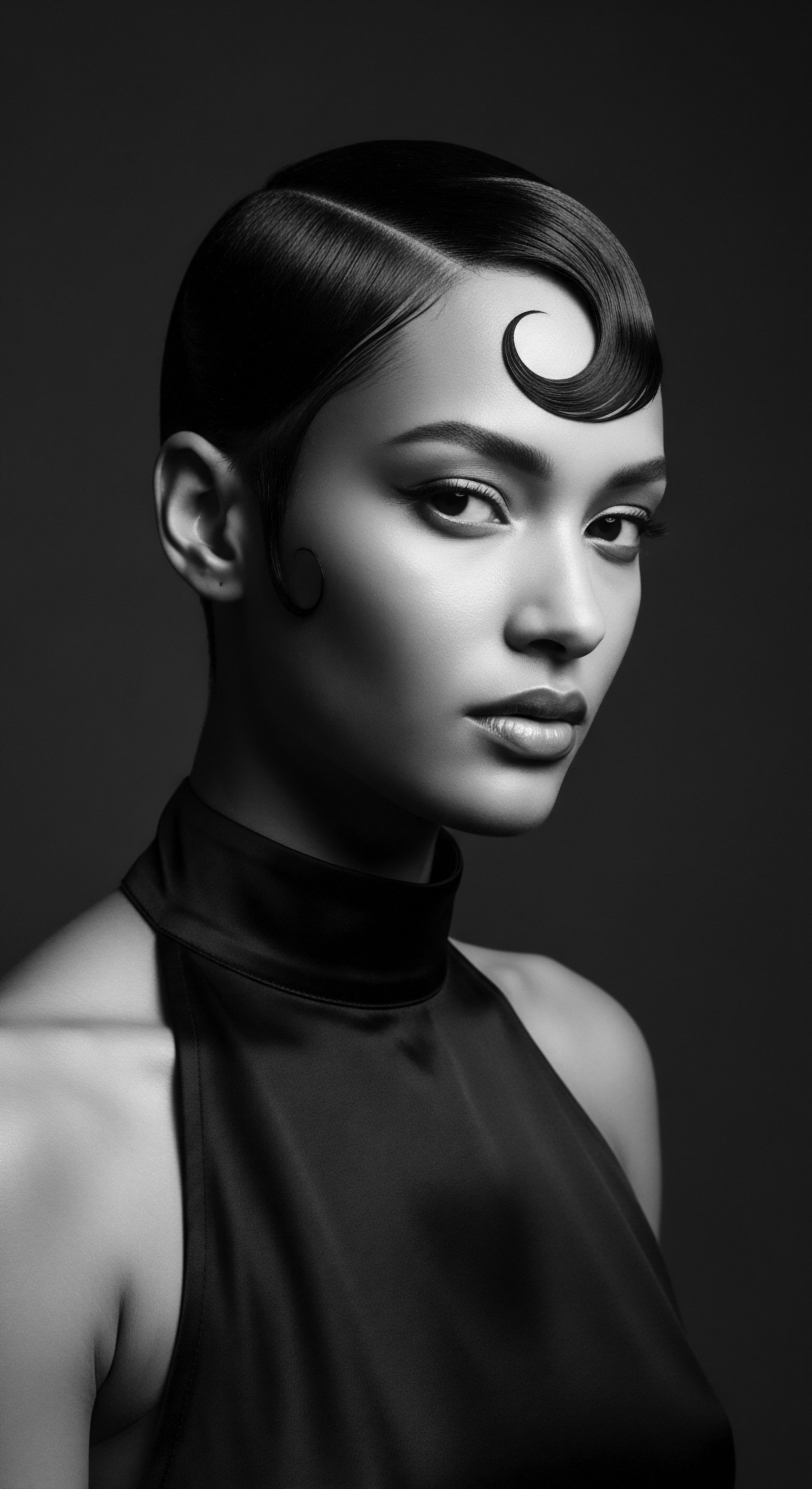
Heat Styling and Ancestral Alternatives
While modern heat styling offers transformations, the historical narrative of textured hair care often leaned on methods that prioritized preservation over alteration. Before the widespread availability of direct heat tools, ancestral communities relied on natural drying, protective wrapping, and air-drying techniques. When heat was applied, it was often indirect and gentle, such as sitting by a fire or using warm cloths. Plant oils played a significant role here, too, conditioning the hair before braiding or twisting, helping to set styles as they dried, and providing a natural sheen without the need for harsh chemicals.
The introduction of heat styling, particularly the hot comb, in the early 20th century, marked a complex chapter in textured hair history, often tied to societal pressures for conformity to Eurocentric beauty standards. This era often saw a departure from the deep oiling rituals of old, as oils were sometimes seen as counterproductive to achieving a straightened look. Yet, even then, certain oils were used as a pressing agent, offering a form of heat protection, however rudimentary. This historical context highlights the ongoing tension between cultural heritage and external beauty ideals, and how plant oils have adapted, or been adapted, within these shifting landscapes.
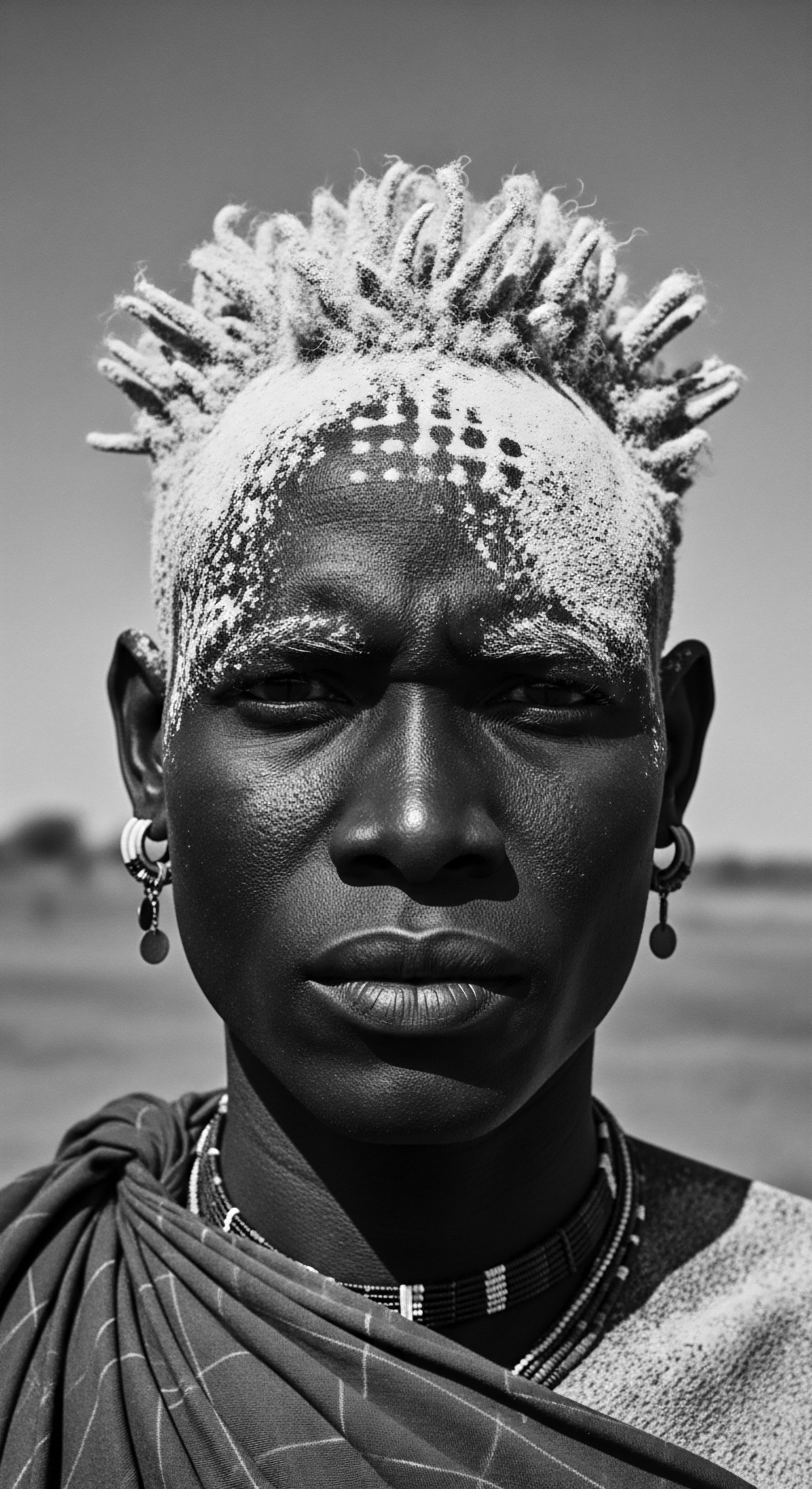
The Complete Textured Hair Toolkit ❉ Past Meets Present
Today’s textured hair toolkit, while expanded by modern innovation, still carries the spirit of ancestral ingenuity. From wide-tooth combs that echo ancient designs to specialized brushes, the goal remains the same ❉ gentle manipulation. Plant oils, in their various forms – from pure unrefined oils to infused pomades and hair butters – remain at the core of this toolkit. They are the constant, bridging the gap between historical practice and contemporary product development.
The choice of oil, whether a light Grapeseed Oil for finer textures or a heavier Avocado Oil for denser coils, is a reflection of a refined understanding, much like how different plant extracts were chosen for specific purposes in ancient African hair pomades. The tradition of mixing and blending, seen in recipes for Chebe powder paste in Chad, where the powder is combined with oils and butters, is a direct link to the ancestral practice of customizing care to individual needs. This adaptability and deep knowledge of plant properties is a living legacy that continues to shape our approach to textured hair.
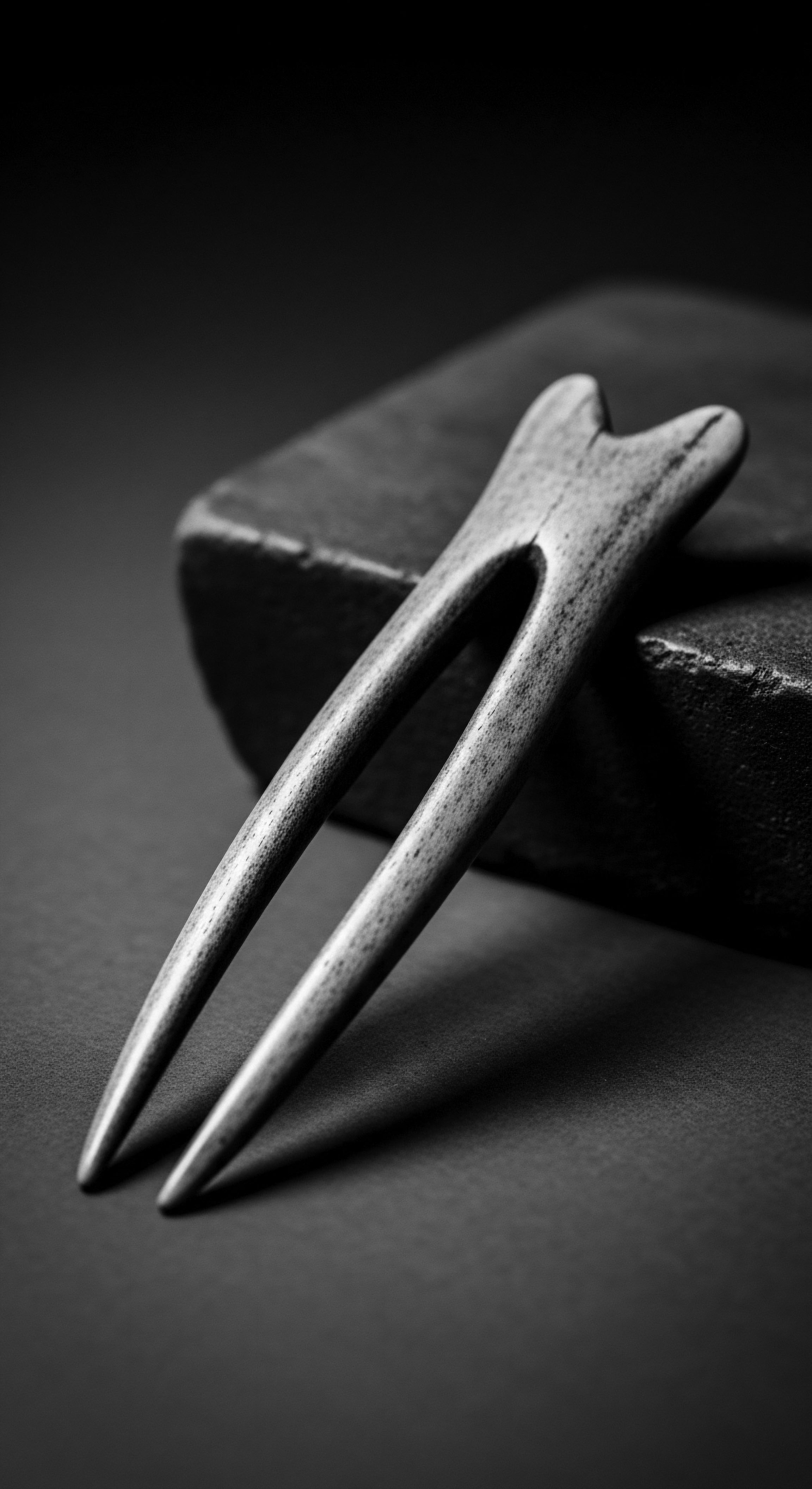
Relay
Having journeyed through the fundamental anatomy of textured hair and the historical rituals that shaped its care, we now stand at a pivotal juncture ❉ how do plant oils truly orchestrate their moisturizing effects, and what deeper cultural narratives do these practices relay across generations? This inquiry extends beyond the simple act of application, inviting us to contemplate the profound interplay of biological mechanisms, socio-cultural resilience, and the enduring power of ancestral wisdom. Here, science offers a language to articulate what our forebears knew by touch and observation, affirming the profound connection between our heritage and the vitality of our strands.
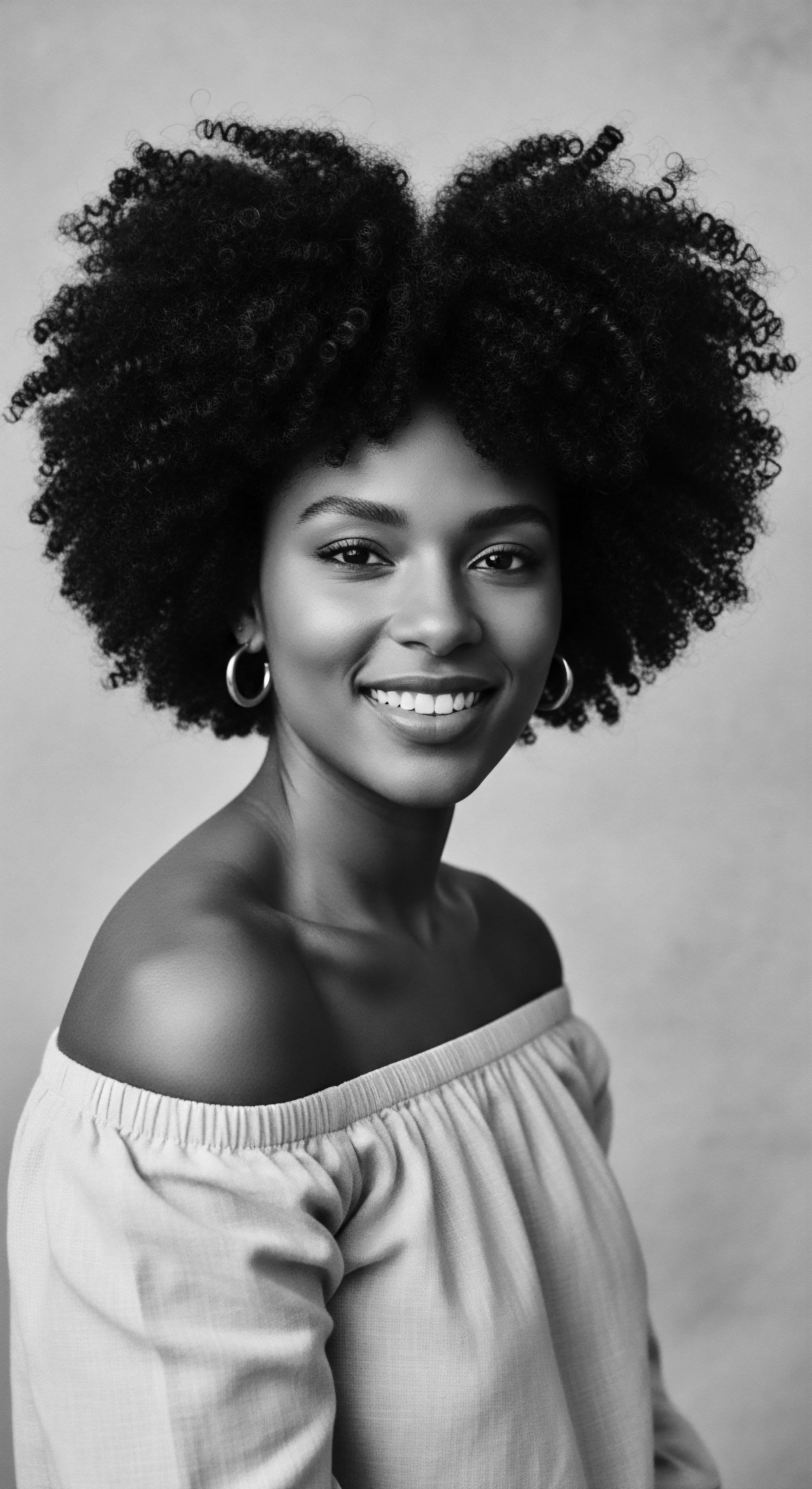
The Biophysical Mechanisms of Hydration and Protection
The moisturizing action of plant oils on textured hair is a sophisticated biophysical process. At its core, moisturization for hair means increasing its water content and preventing that water from escaping. Textured hair, characterized by its coiled structure, possesses a naturally raised cuticle layer, which allows for more rapid water loss compared to straighter hair types. Plant oils intervene in this dynamic through several key mechanisms:
- Occlusion ❉ Many plant oils, particularly those rich in long-chain fatty acids like Stearic Acid or Palmitic Acid, form a thin, lipid film on the hair’s surface. This film acts as an occlusive barrier, reducing the rate of transepidermal water loss (TEWL) from the hair shaft. By creating this seal, oils trap the existing moisture within the hair, keeping it hydrated for longer periods. This external coating also provides a physical shield against environmental aggressors, such as wind and low humidity, which can strip hair of its precious water content.
- Penetration and Internal Lipid Replenishment ❉ Certain plant oils, notably Coconut Oil, are exceptional due to their molecular weight and specific fatty acid composition, predominantly lauric acid. This smaller, linear fatty acid has a high affinity for hair proteins and can penetrate the hair shaft, moving beyond the cuticle into the cortex. Once inside, these penetrating oils can replace the lost intercellular lipids, which are the natural fats that bind the cuticle cells together and contribute to the hair’s structural integrity. This internal replenishment strengthens the hair from within, reducing protein loss and improving elasticity, thereby making the hair more resilient to breakage. A study on the effect of plant oils on fiber strength showed that daily application of olive oil and Brazil nut oil increased breakage strength and reduced combing force, demonstrating their internal fortifying capabilities (Typology, 2024).
- Hydrophobicity Enhancement ❉ The application of plant oils can render the hair more hydrophobic, meaning it repels water. While this might seem counterintuitive for moisturization, it is crucial for textured hair. When hair absorbs too much water, it can swell and contract repeatedly, a phenomenon known as hygral fatigue, which weakens the hair shaft and leads to breakage. By making the hair more hydrophobic, oils help regulate water absorption, preventing excessive swelling and maintaining the hair’s structural integrity.
This scientific understanding provides a contemporary lens through which to appreciate the intuitive wisdom of ancestral practices. The repeated application of oils, the layering of products, and the emphasis on protective styles were all, in essence, sophisticated methods of managing the hair’s moisture balance and protecting its inherent structure.
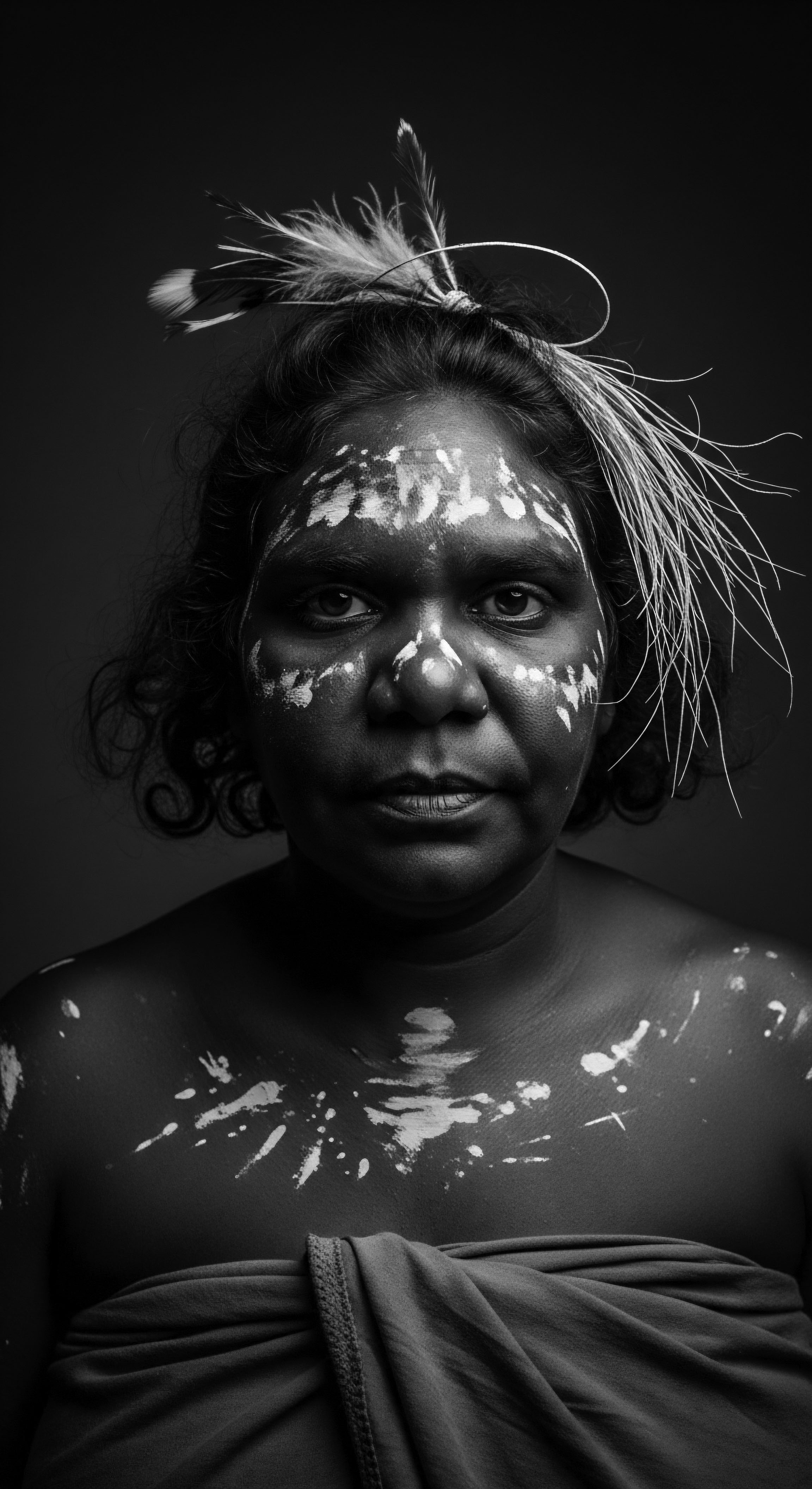
Ancestral Practices Validated by Modern Science
The enduring efficacy of traditional hair oiling practices is increasingly supported by contemporary research. For centuries, African communities, and those across the diaspora, have utilized oils like Shea Butter and Marula Oil, not just for their moisturizing properties but for their protective qualities against harsh climates. This protective function, now understood through the lens of occlusive barriers and antioxidant content, was a lived reality for those who navigated sun-drenched landscapes.
One powerful historical example of plant oils’ enduring significance in textured hair heritage is found in the practices of the Basara Arab Women of Chad. These women are renowned for their floor-length hair, which they attribute to the consistent use of a traditional herbal mixture known as Chebe Powder. The practice involves mixing Chebe powder (comprised of ingredients like lavender crotons, cherry kernels, cloves, and resin) with oils and butters, applying it to damp, sectioned hair, and then braiding the hair to allow the mixture to sit for days. This ritual, passed down through generations, exemplifies the deep connection between specific plant-derived ingredients, meticulous application, and the preservation of hair length and health.
The Chebe powder itself does not necessarily promote growth from the scalp but rather works to retain length by preventing breakage and locking in moisture, especially vital for kinky and coily hair types prone to dryness and breakage. This case study powerfully illustrates how ancestral knowledge of plant properties, combined with specific rituals, directly addresses the unique needs of textured hair, leading to observable, long-term benefits that modern science now attributes to moisture retention and cuticle strengthening.
The Basara Arab women of Chad demonstrate a powerful ancestral lineage of textured hair care, using Chebe powder mixed with oils to prevent breakage and seal moisture, a practice now validated by modern understanding of hair’s needs.
The very act of massaging oils into the scalp, a common thread in Ayurvedic and African traditions, is now recognized for its ability to stimulate blood circulation, thereby promoting healthier hair growth and improving nutrient delivery to the follicles. This holistic approach, treating the scalp as the fertile ground from which hair springs, highlights a continuity of wisdom that transcends time.

Cultural Resilience and Identity Through Hair Oils
The journey of plant oils in textured hair care is also a narrative of cultural resilience. During periods of forced assimilation, particularly for Black communities in the diaspora, hair became a battleground for identity. Yet, even in the face of immense pressure to conform to Eurocentric beauty standards, traditional hair care practices, including the use of plant oils, persisted, often clandestinely. These oils became silent acts of defiance, maintaining a connection to ancestral roots and a visual marker of identity.
The Natural Hair Movement of the 1960s and 70s, and its resurgence in the early 2000s, saw a conscious return to these traditional practices and ingredients. Jojoba oil, though originating in indigenous American cultures, gained significant cultural relevance within Black communities during this period, as it offered a natural solution for common textured hair concerns like dryness and breakage, aligning with a broader embrace of cultural authenticity. This shift was not merely a trend but a profound reclamation of heritage, where plant oils became symbols of self-acceptance and pride.
The act of oiling hair, whether in a shared communal setting or a solitary moment of self-care, became a ritual of self-affirmation, a quiet acknowledgment of one’s lineage. This is why discussions around hair oils in the Black community often extend beyond their chemical composition to their cultural weight, their ability to connect individuals to a collective past and a shared future (Adotama, 2023).
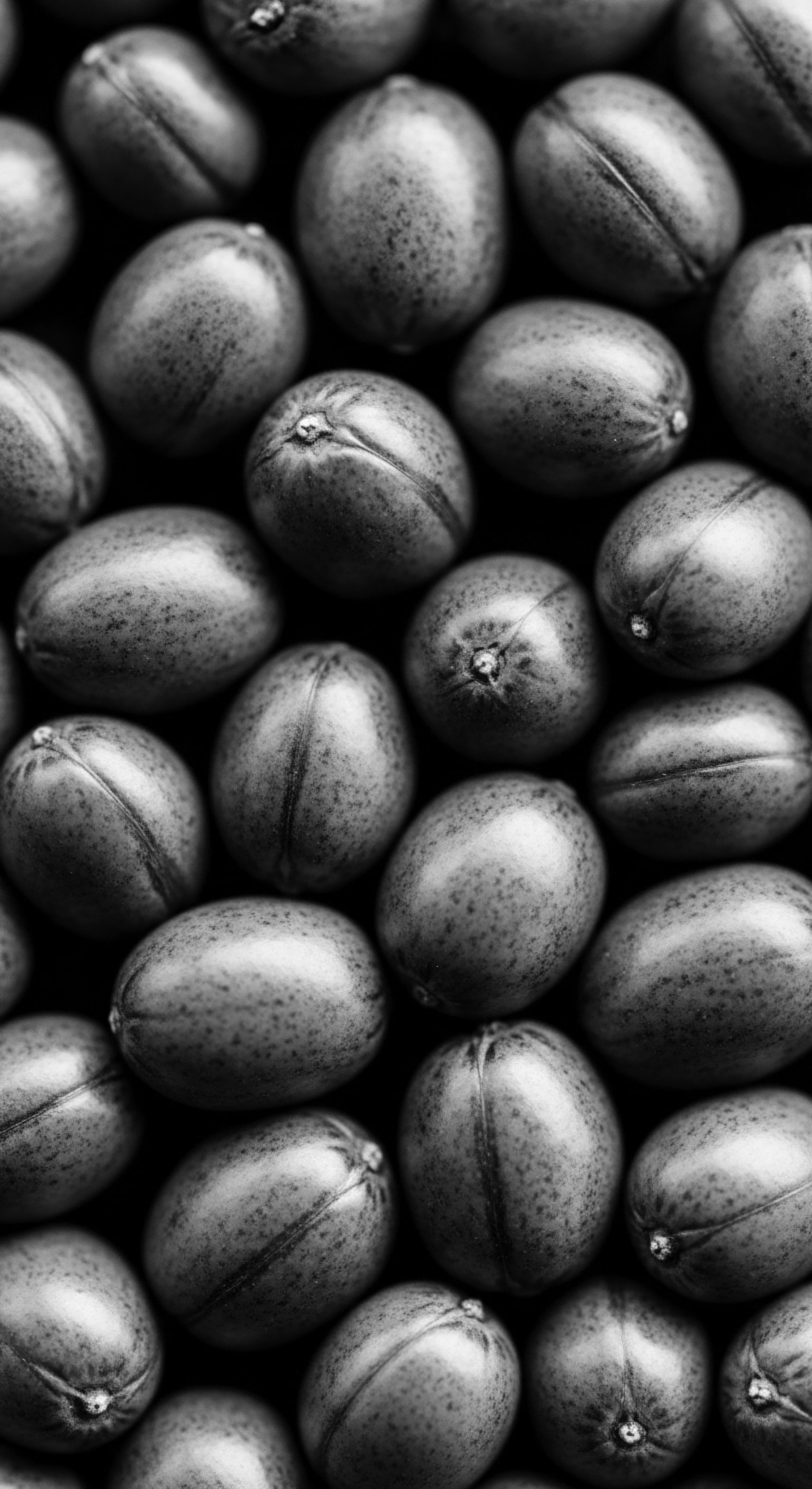
The Future of Textured Hair Care ❉ Acknowledging the Past
As scientific understanding advances, it increasingly validates the wisdom embedded in ancestral hair care. The future of textured hair care, therefore, is not about abandoning the old for the new, but rather about a respectful integration. It is about understanding the biophysical mechanisms that explain why shea butter has always been a balm for coils, or why coconut oil penetrates so deeply.
This continuous relay of knowledge, from elemental biology to ancient practices, and then to contemporary scientific validation, enriches our appreciation for the simple yet powerful plant oils. They stand as enduring testaments to the ingenuity of our ancestors, providing not just moisture, but a tangible link to a vibrant and resilient heritage.
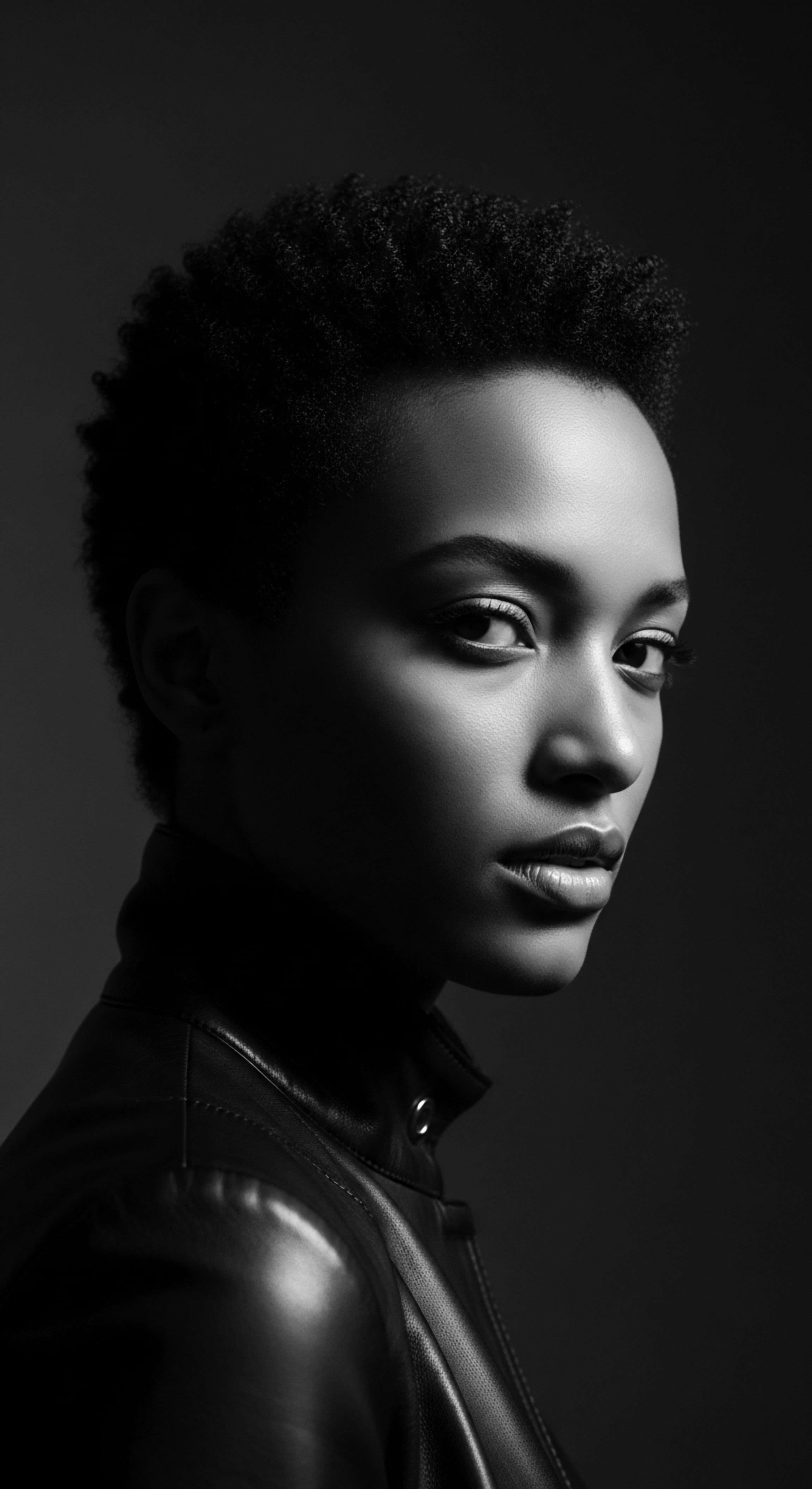
Reflection
The journey through the very nature of textured hair and the enduring legacy of plant oils is more than an exploration of botanical chemistry; it is a profound meditation on the ‘Soul of a Strand’. Each coil, each curl, carries within it the echoes of generations, a vibrant heritage shaped by hands that knew the earth’s bounty and understood the inherent thirst of our hair. Plant oils, from the revered shea butter to the penetrating coconut, are not simply emollients; they are carriers of ancestral wisdom, conduits of care that have nourished both scalp and spirit through time.
They remind us that the most profound solutions often lie in the oldest traditions, that the deep moisture our textured hair craves is a gift from the earth, offered and received across countless centuries. This understanding compels us to approach our hair not as a challenge to be conquered, but as a living archive, a sacred trust, deserving of reverence and care that honors its deep past and its boundless future.
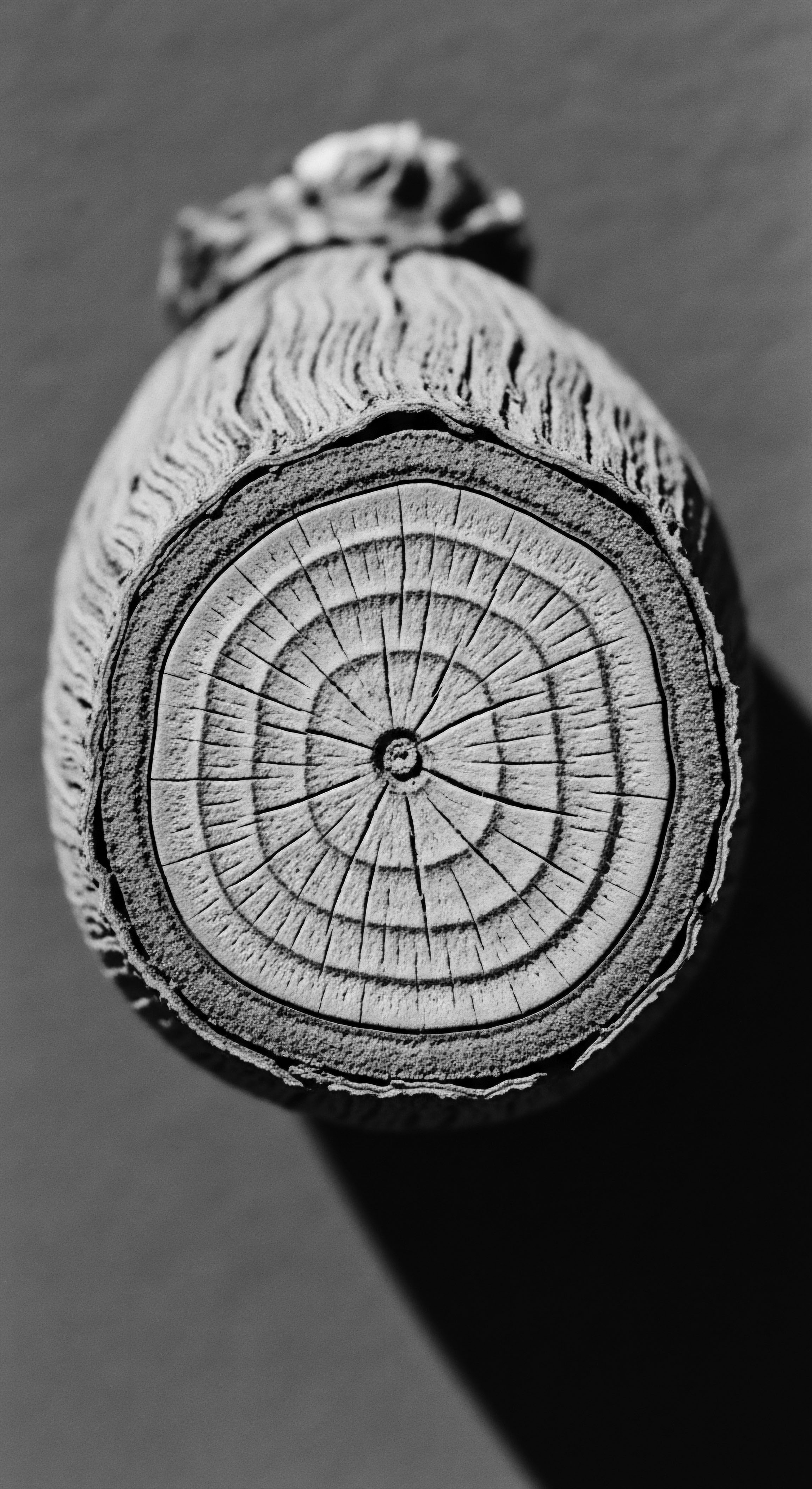
References
- Adotama, A. (2023). Hair Oils in The Black Community ❉ Treating Androgenetic Alopecia. The Dermatologist .
- Garodia, K. (2021). Benefits of Oiling Hair ❉ Is Oiling Good for Your Hair? Healthline .
- Oforiwa, A. (2023). The History and Culture of African Natural Hair ❉ From Ancient Times to Modern Trends. AMAKA Studio .
- Typology. (2024). What are the benefits of a hair oil? Typology .
- University of Salford Students’ Union. (2024). The Remarkable History Behind Black Hairstyles. University of Salford Students’ Union .
